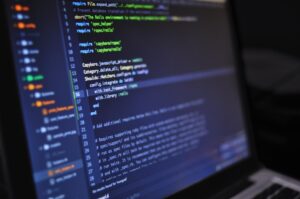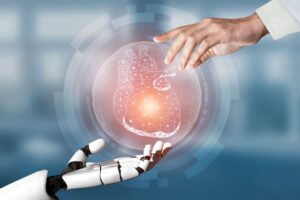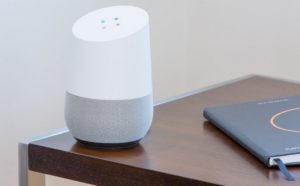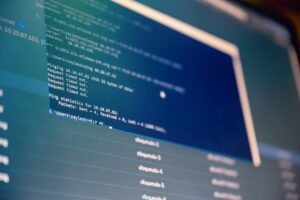The 20th century brought us innovative technologies that changed the standards in all areas of science. Software development for business, robotic technologies, and the Internet of things help companies cross the borders, reach their clients in every single part of the world, as the smart connections between people and things have made our life completely different. The audience is looking for new opportunities to get better products and services faster and at less cost.
“As for healthcare, where the life of people is always on the line, expectations and demands in it are higher than anywhere else.”
Management of hospitals, clinics, and separate medical specialists are taking advantage of the IoT technologies in the way that during recent years we witness the occurrence of a new scientific field, the Internet of Medical Things (IoMT).
To define it shortly, by the IoMT we mean a well-organized system of gadgets, collecting data from different sources and interacting with each other to support the providing of different services on the high level of quality.
Let’s briefly analyze in what aspects of healthcare the application of ITO is more widespread.
Out-Patient Healthcare
It’s always difficult for doctors and medical institutions to provide good support for the patients who continue their treatment at home, that’s why applying smart technologies gave additional opportunities for both, patients and hospitals, monitor the processes related to therapy with necessary accuracy and attention. Among the most the areas the IoT is most popular are the following:
- Medication Management
Some patients are dependent on the schedule and dose of medication in the way that any single mistake may lead to severe consequences. That’s why to eliminate the human factor, which is evident in forgetting to take a pill on time or the lack of attention to the process of medication, doctors use IoT to help patients follow the recommendations, and control the dose of the drug taken.
Some patients who control the process of medication themselves, often need reminders. Other patients, whose medication is under control of caregivers, need special supervision. And first of all, their nurses or members of the family should be properly informed about the schedule and dose to avoid mistakes.
“Patients with chronic diseases, who’s been using the same medication for a long time, don’t need to visit the hospital to get a new prescription anymore.”
Their doctors will e-prescribe the pills when they need it. Just a couple of clicks and that’s it.
- Communication with hospital
Patients want to save their time, and in this situation, only hospitals and clinics that are aware of the importance of waiting time reduction can hope for their clients’ loyalty. Some patients have a habit to come earlier, others are always late, the same is about doctors. So, to get rid of the negative effect of those factors, hospitals start using IoT to reduce waiting time and manage the patient flow easily.
Timely patient ticketing and well-designed system of patient distribution help manage the patients who come for the initial consultancy in a proper way. Another very important aspect is setting the appointment itself. Previously, when it was done on the telephone, patients would spend a lot of time holding on the line.
Besides, to cover the needs of the growing number of patients, hospitals would have to hire additional human resources for the calling centre. But in the end, a significant number of patients would be still disappointed. Nowadays, with the help of IoT, patients only need to open the application on their smartphones, choose the appropriate time, and click for approval.
- Preventive healthcare measures
Patients who don’t show the symptoms of certain diseases, but are genetically predisposed to them, need their permanent diagnostics to monitor the vitals and notice any suspicious changes as early as possible. Dementia, diabetes, and Parkinson’s disease are the most vivid cases. Collecting data, storing, and analyzing it by doctors will help such patients prevent the disease, or postpone its occurrence easily with even small changes in the lifestyle. Wearable gadgets are widely used for these cases.
In-Patient Healthcare
Among the areas, ITO is applied in the in-patient healthcare services we can mention the cases where smart technologies are used for treatment and the cases where they are applied for the general administrative tasks.
- Routine tasks automation
To improve the inner communication in the hospital, and the cooperation between different hospital departments, automation with the help of IoT has gained great popularity. Nurses on the ward can be permanently in touch with the responsible doctors without the necessity to leave the patient.
As for automation in the managerial issues, we can mention the improvement of data management with the help of IoT. Medical data is very sensitive, and any mistake in its entry or processing may lead to lethal consequences. That’s why to optimize the accuracy the new technologies are used to collect, analyze, and store the information.
On the other hand, doctors and allied medical staff are not the only people who need constant access to the patients’ data.
“The patients are also interested to get the test results on time and can monitor any changes in the personal records 24/7. So, IoT provides a multi-dimensional system for data management.”
- Treatment and life support
Different sensors connected to the hospital monitoring system incessantly collect the data about patients who are in the department of intensive care. They help maintain the normal process of treatment, as the information they provide, is constantly upgraded.
Usually, in such departments, every patient is connected to several types of equipment, like lung ventilation sets, and different sensors that control vitals. It’s impossible to hire a separate specialist who will check the equipment and the information it provides, that’s why IoT plays a key role here, as it remotely controls and maintains the life and health of the patients. Besides, doctors can reach the needs of several patients simultaneously, as they have a possibility to monitor tier state on distance.
Also, Read 6 Major IoT Security Issues










